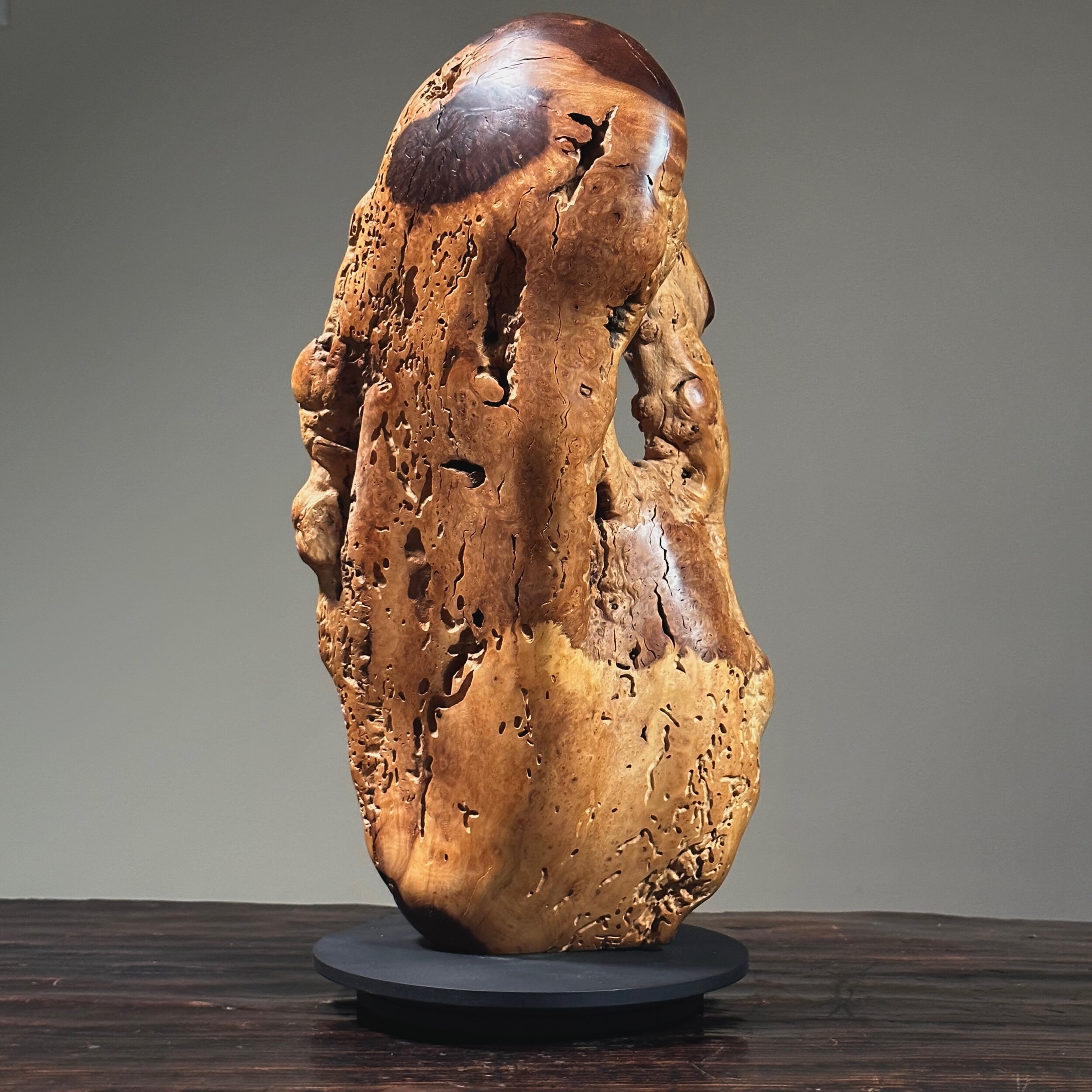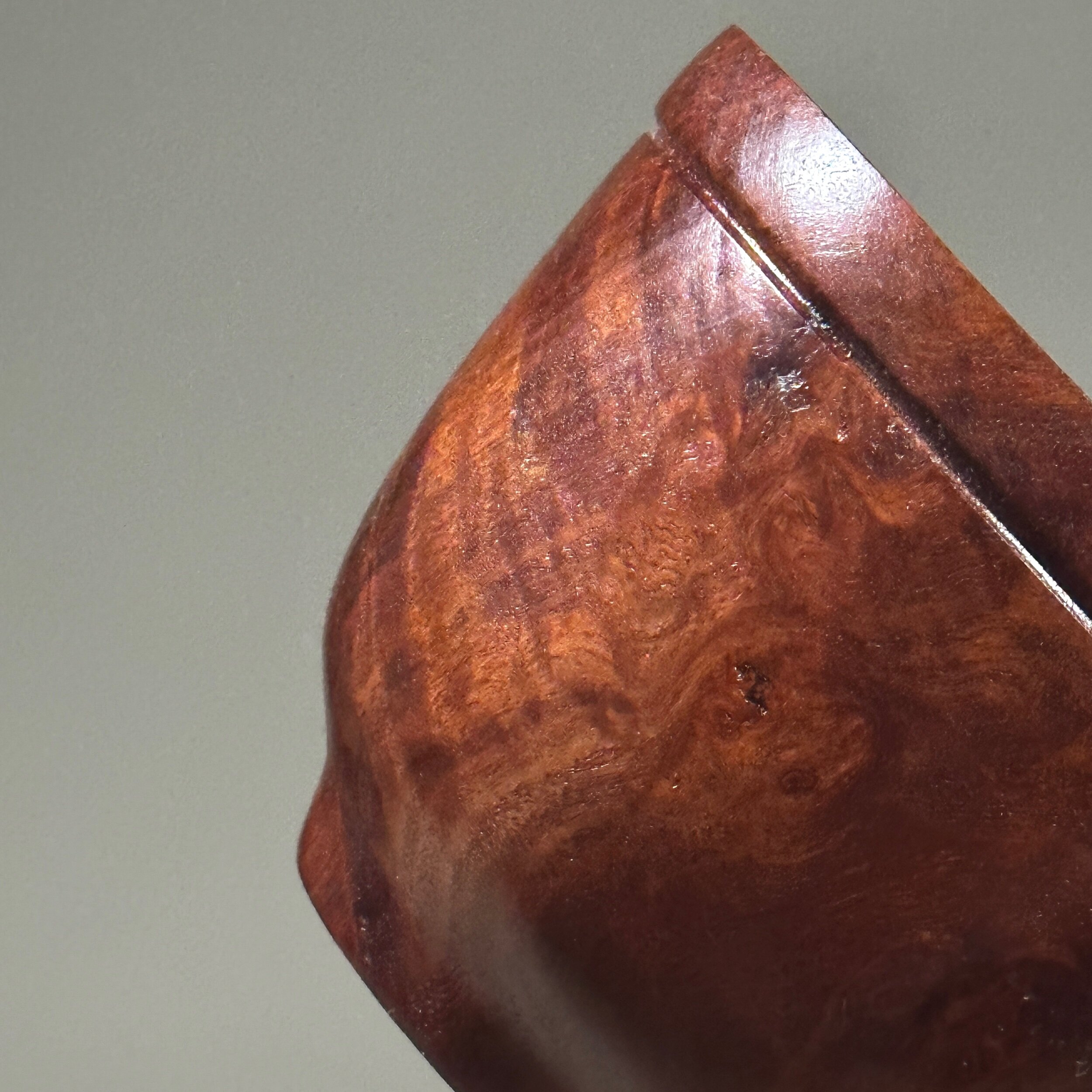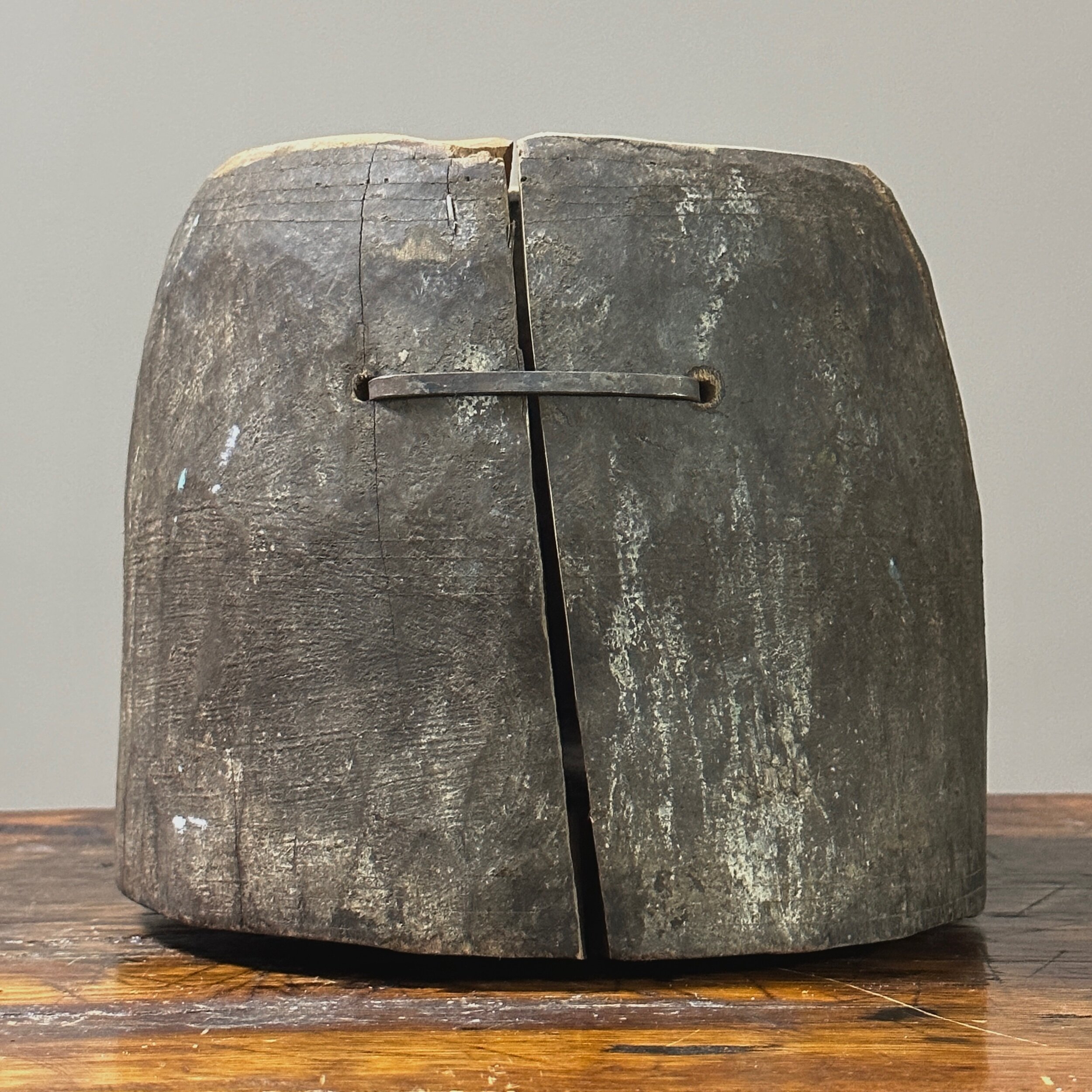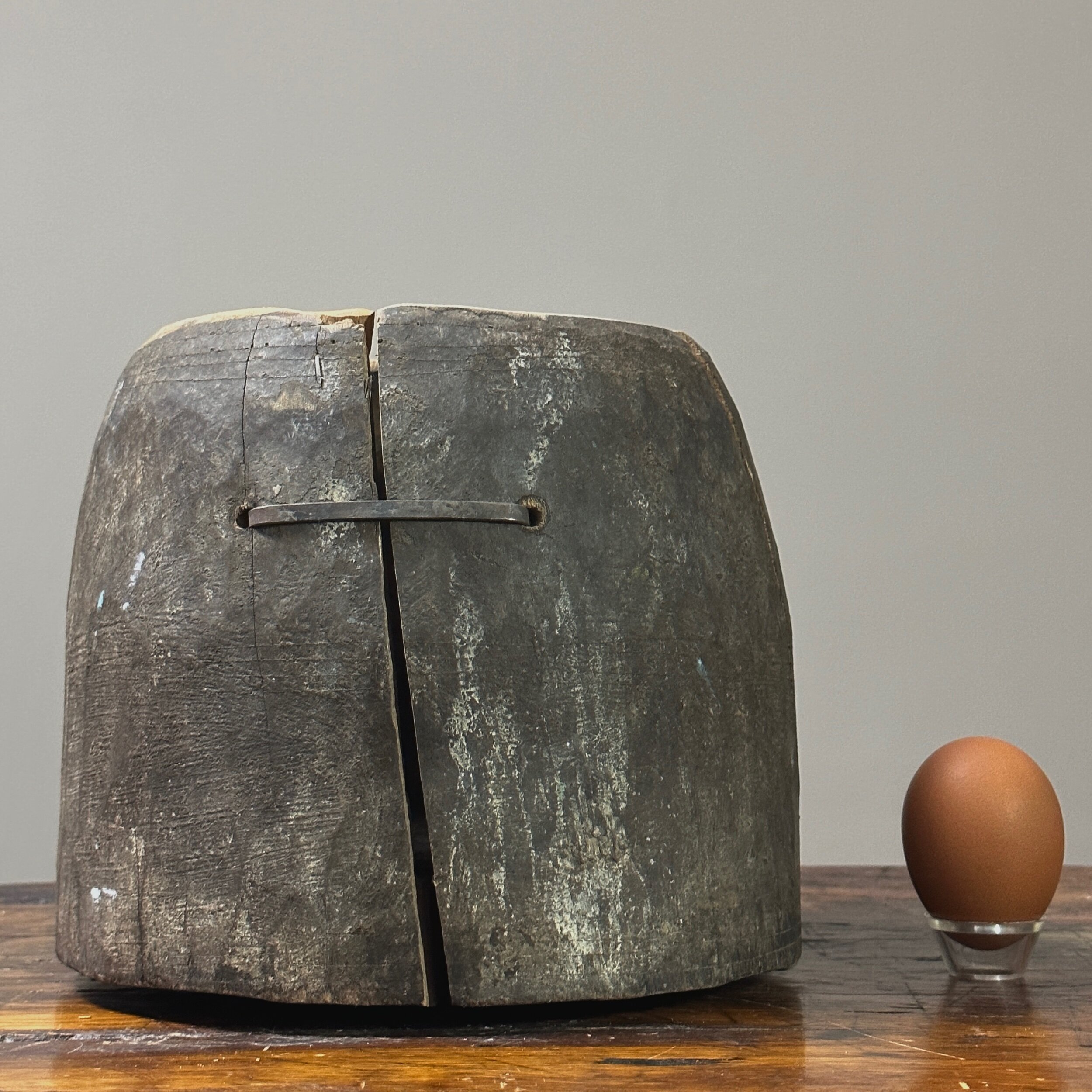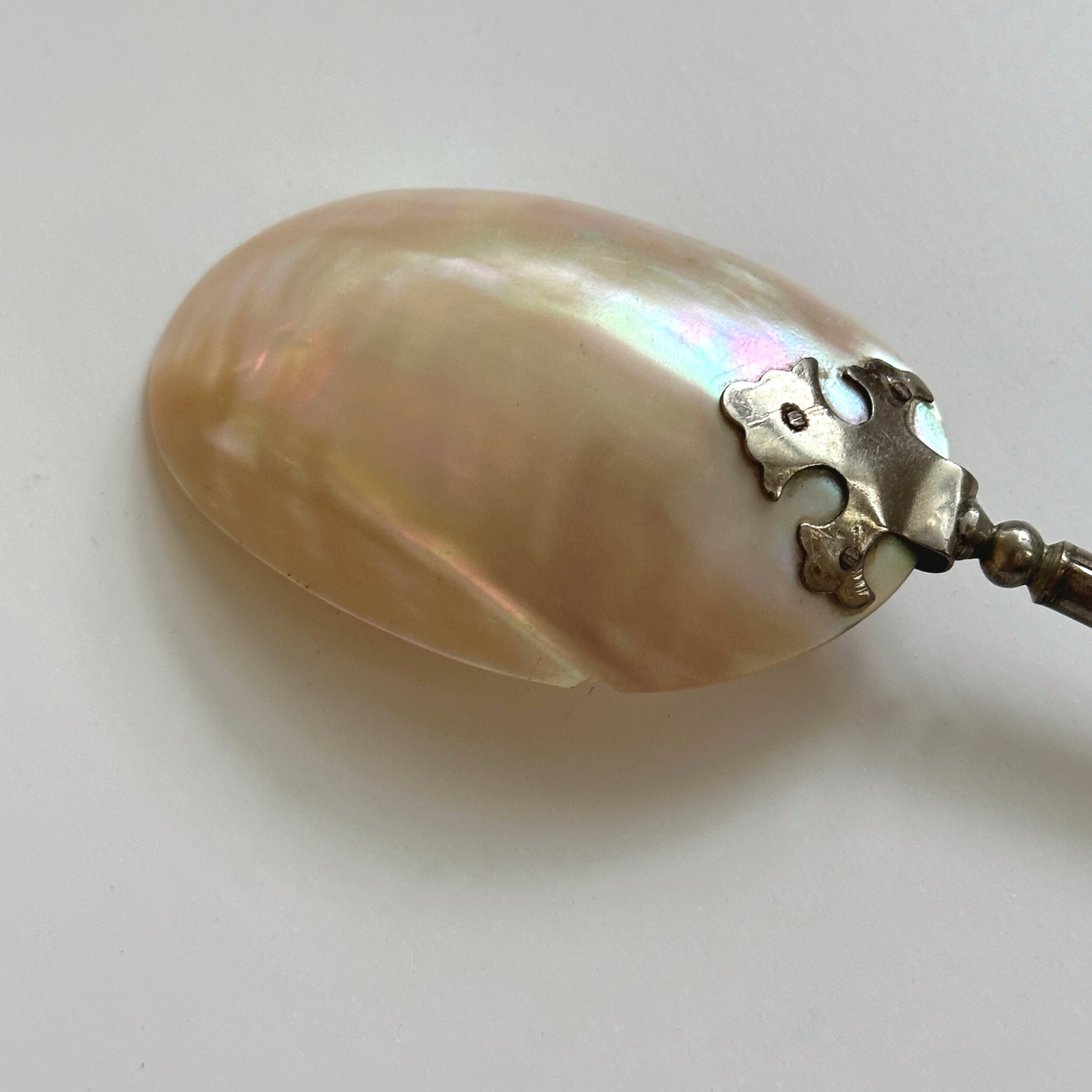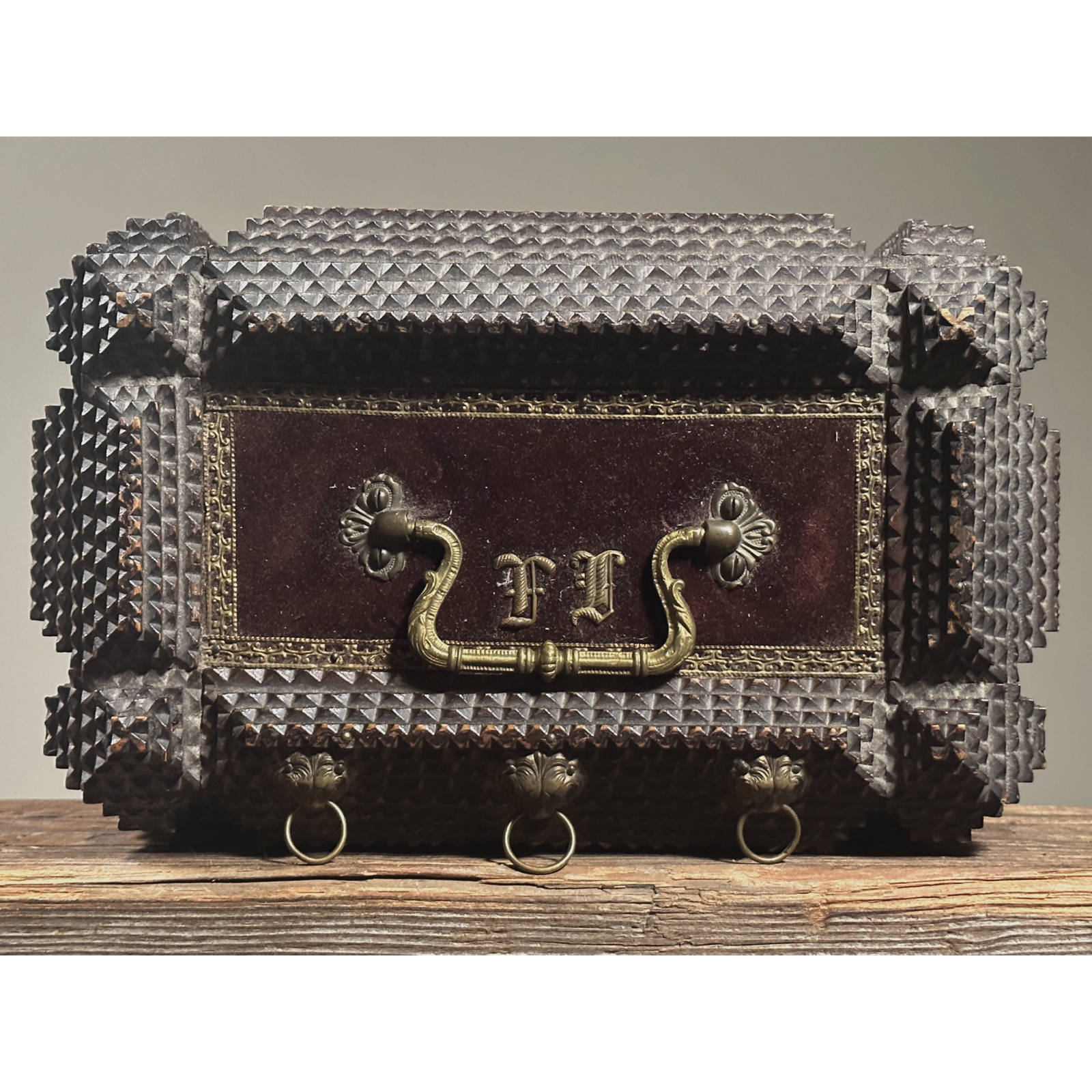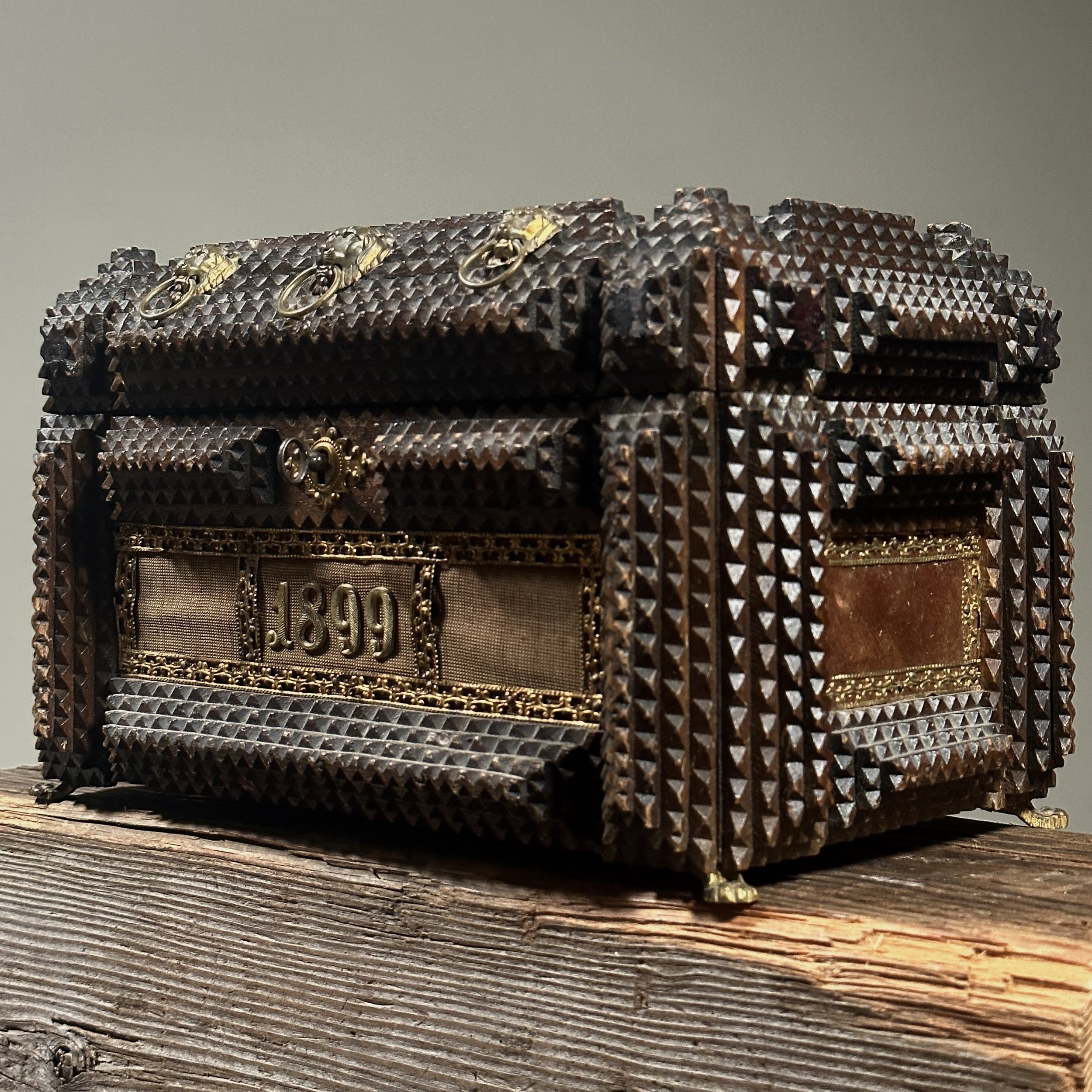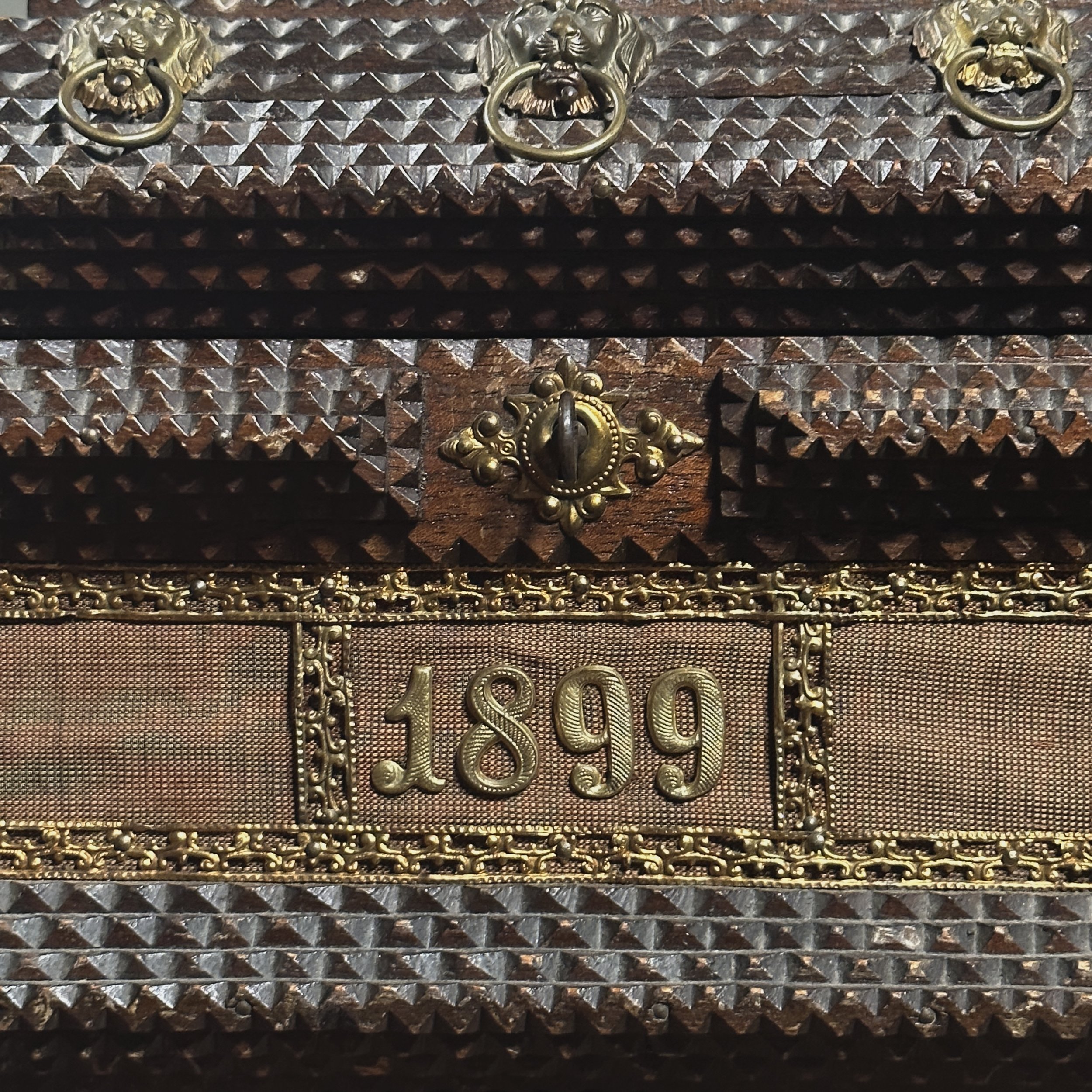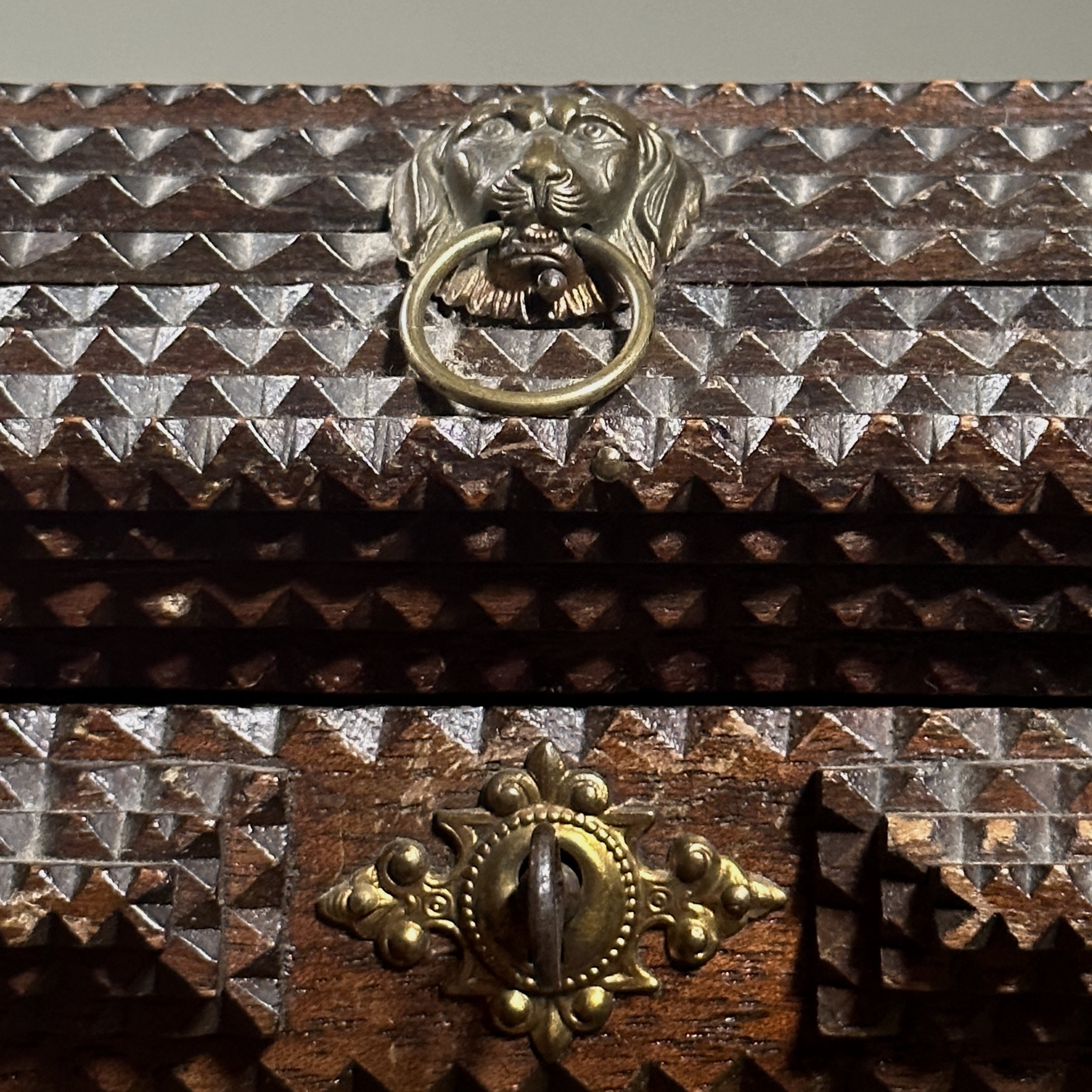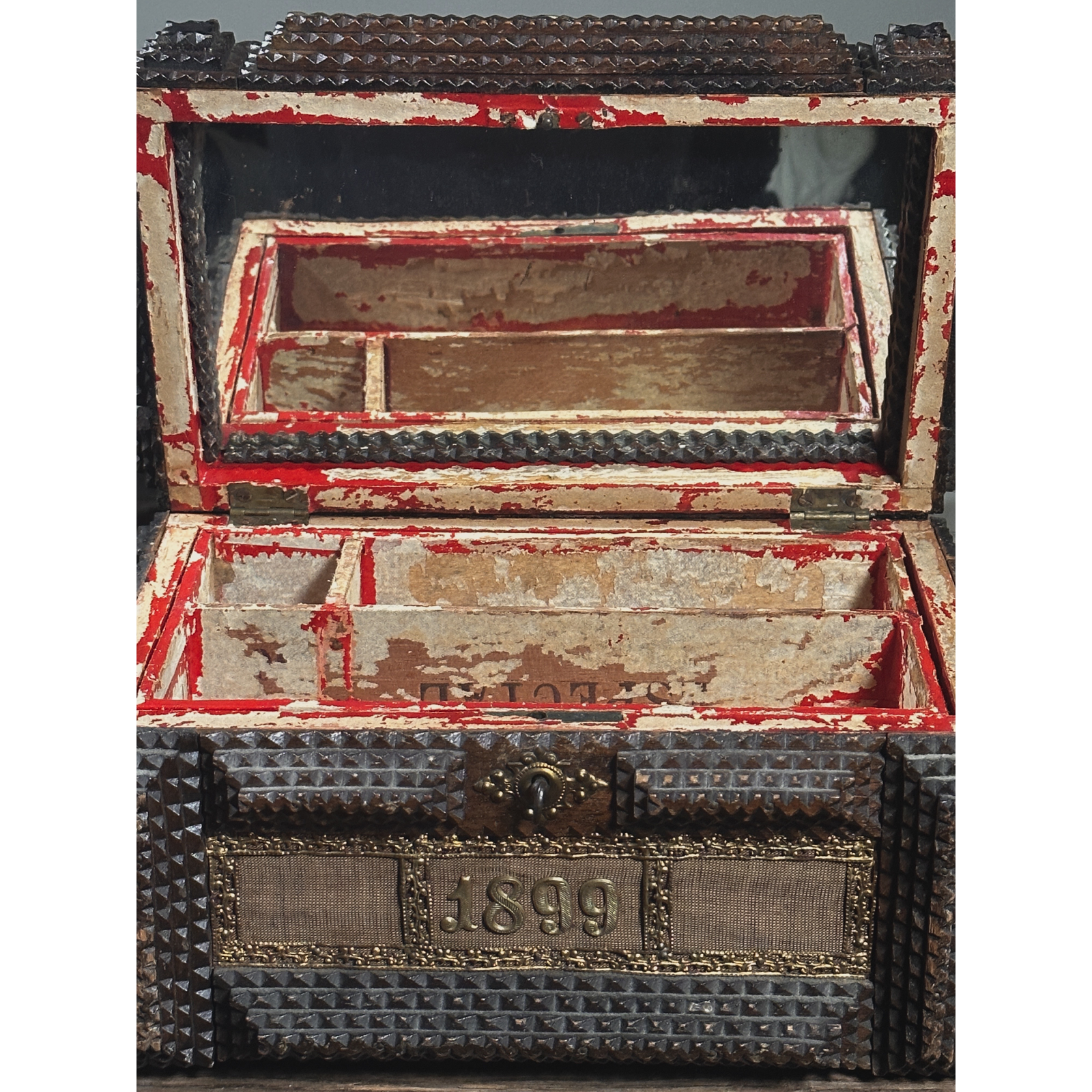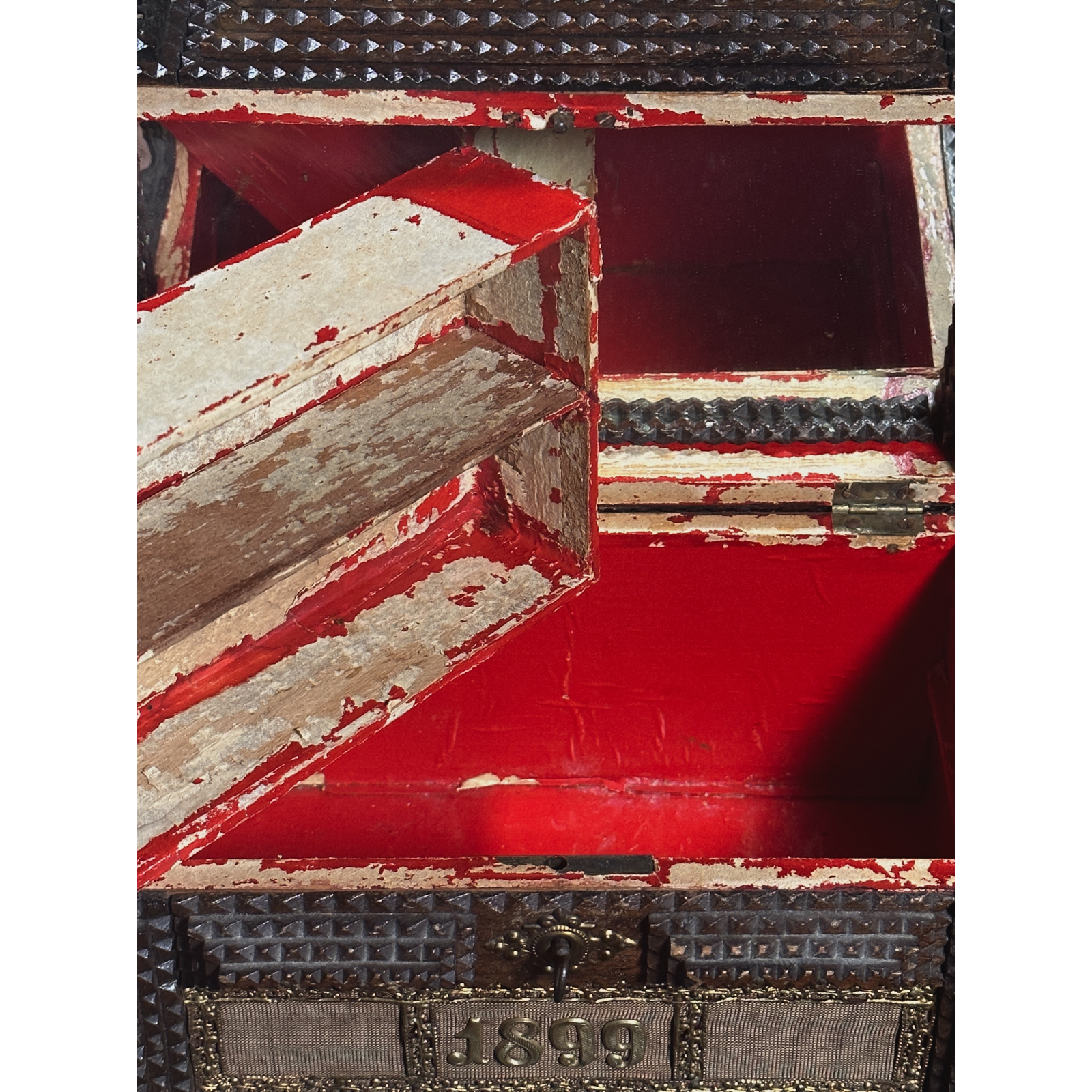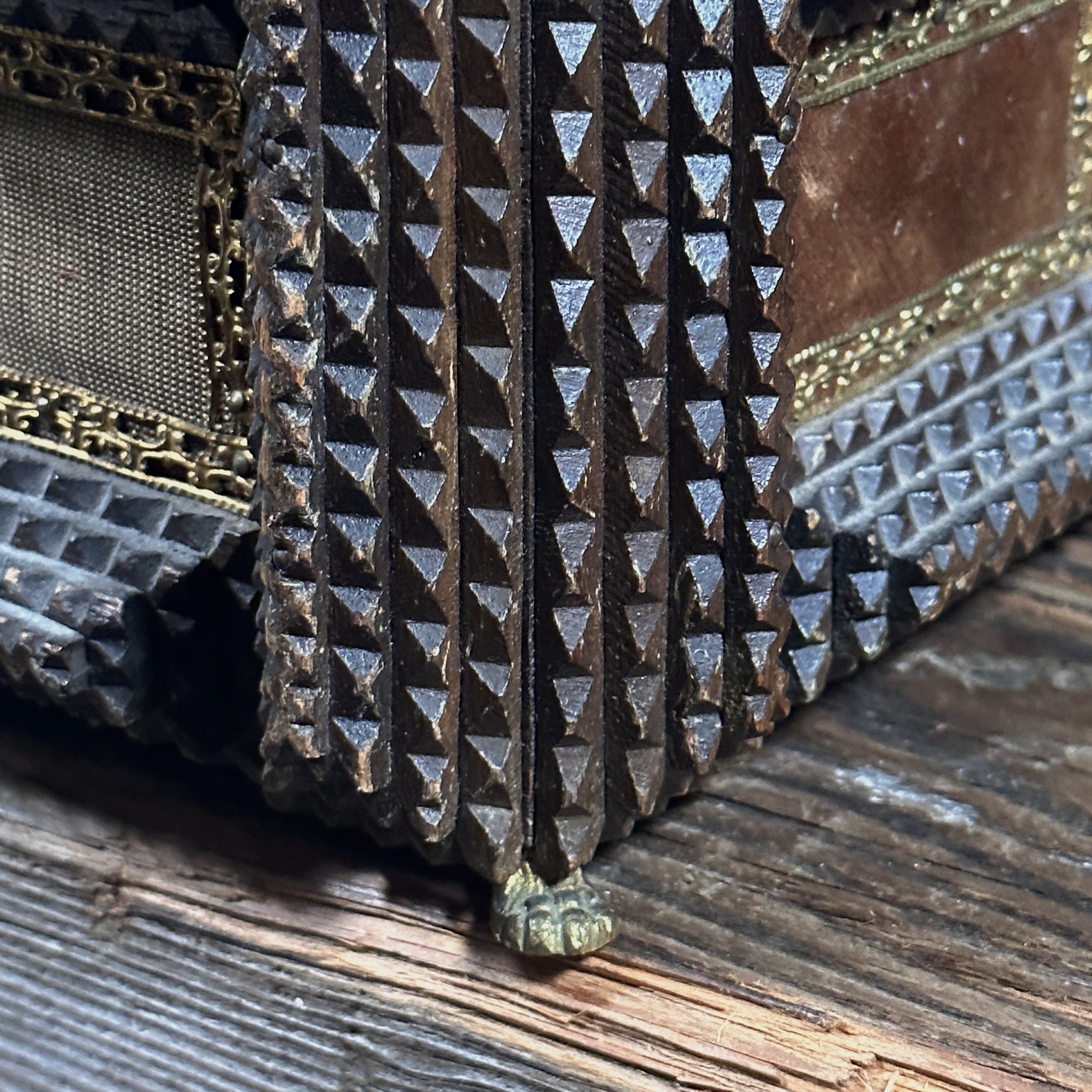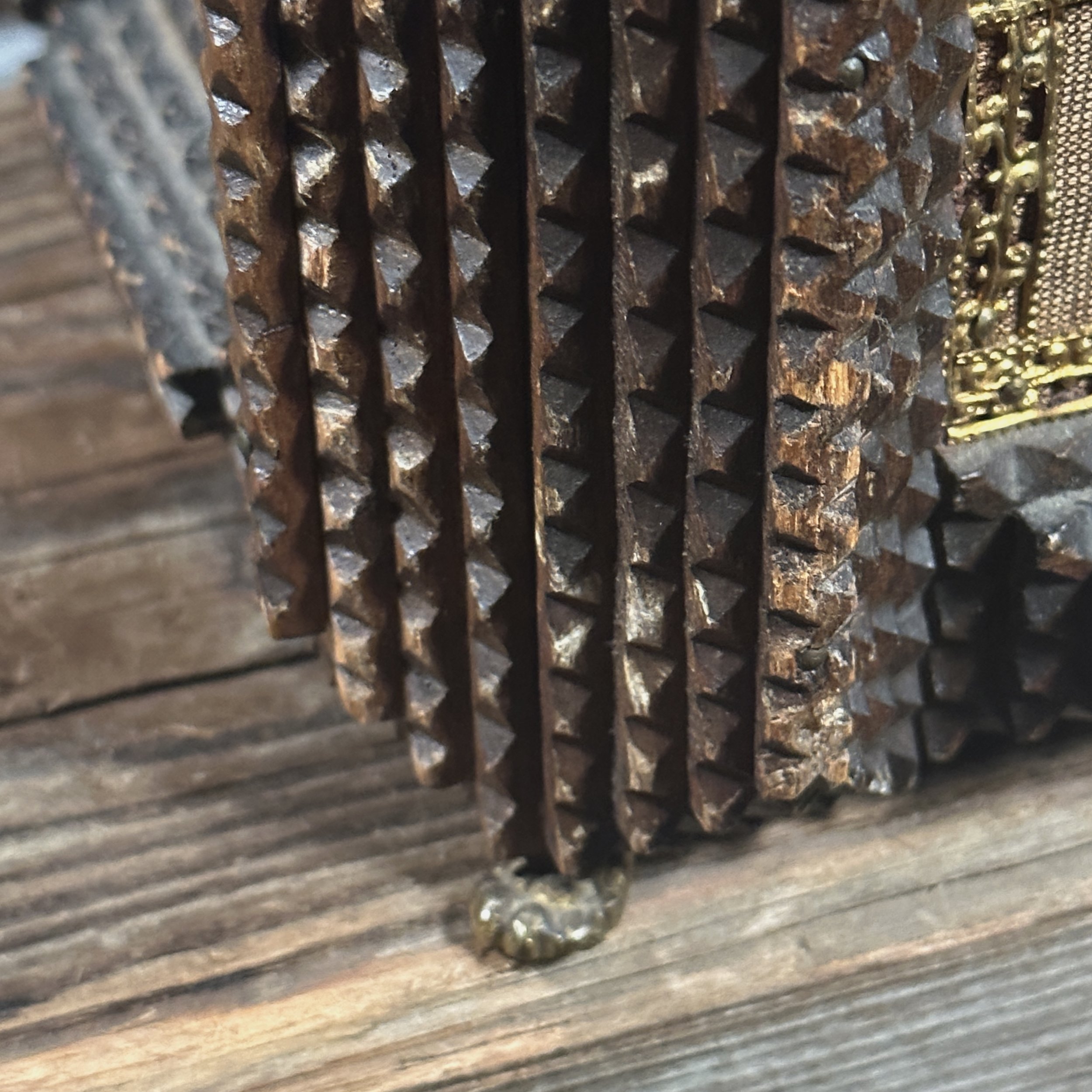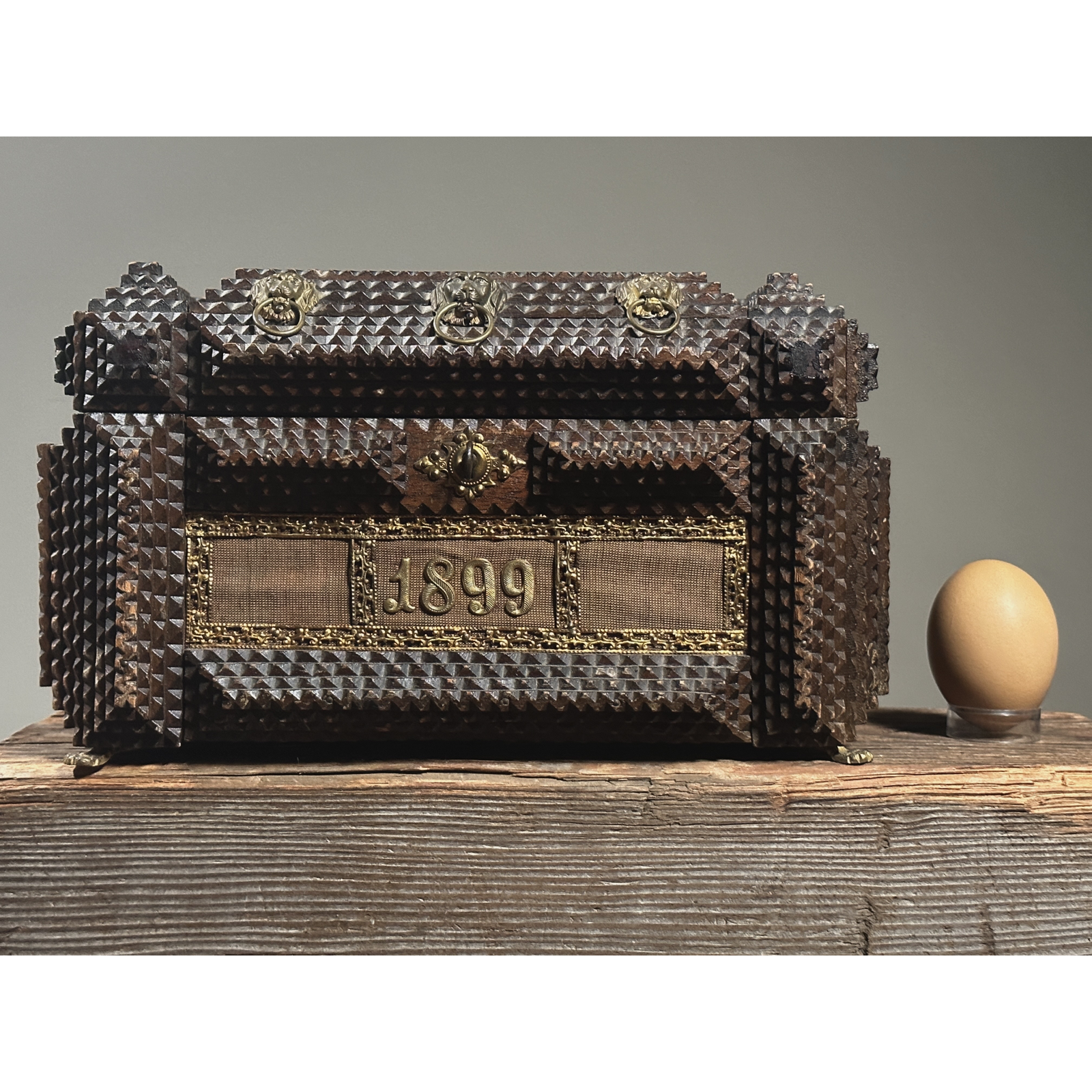 Image 1 of 7
Image 1 of 7

 Image 2 of 7
Image 2 of 7

 Image 3 of 7
Image 3 of 7

 Image 4 of 7
Image 4 of 7

 Image 5 of 7
Image 5 of 7

 Image 6 of 7
Image 6 of 7

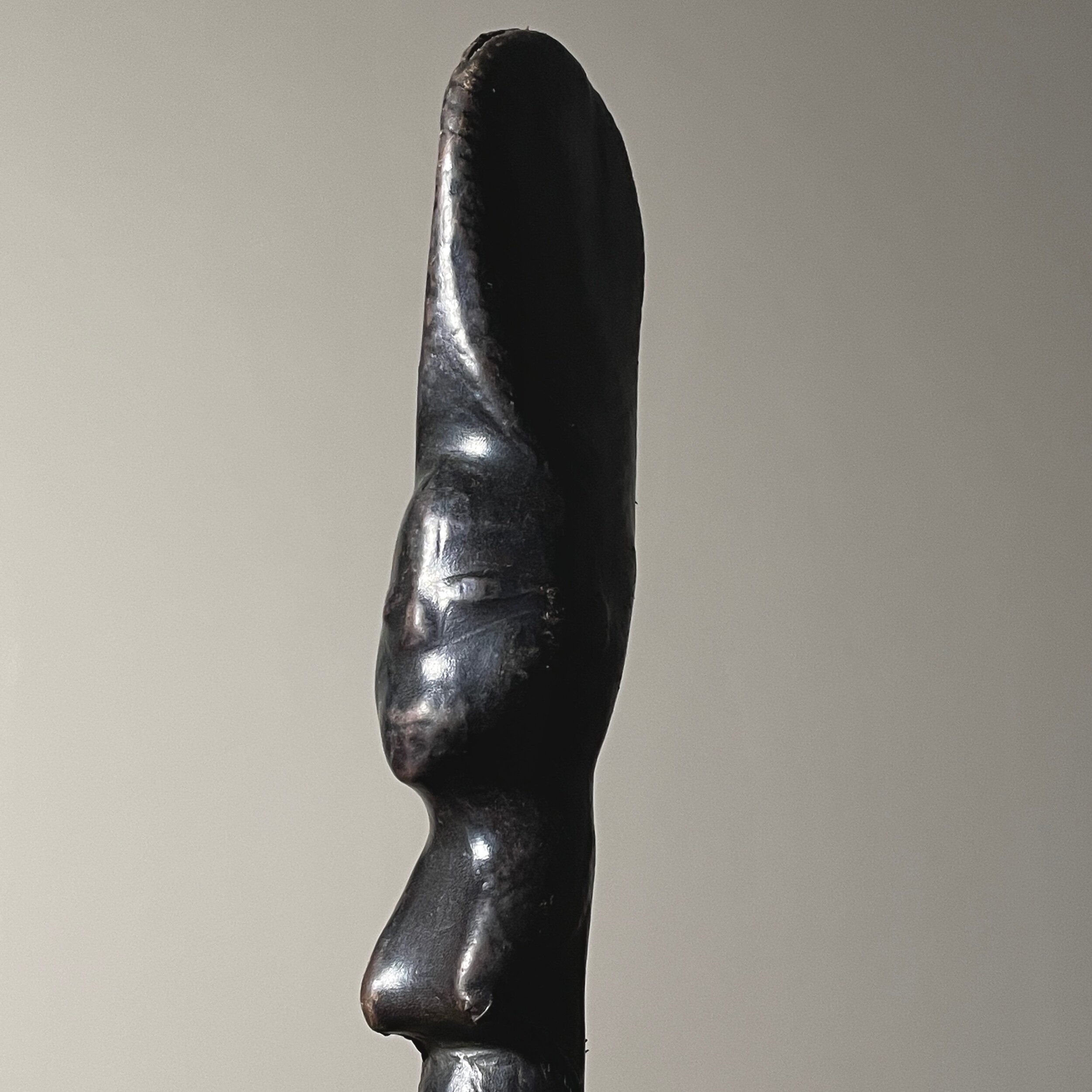 Image 7 of 7
Image 7 of 7








Vintage Mossi People Leather Clad Biiga Doll (Burkina Faso)
Vintage Mossi People Leather Clad Biiga Doll (Burkina Faso). Cladded entirely in leather, the wooden doll underneath is only seen in form. The hand stitching of the leather goes along the entirety of the base and then up the backside until reaching the top of the gyonfo (hair). Stitching along the side of each breast. Wear is present from use. In good condition with wear and patina conducive with age.
Size: 14”H x 2.5”D
Provenance: Estate of Professor Philip Gould, NYC; Exhibited "Africa's Iron & Copper Currencies", Institute of African Studies, Columbia University, March 2000. Professor of Chinese Art History at Columbia University and Sarah Lawrence College, Professor Philip Gould was a passionate collector of African Art, and curated numerous museum and gallery exhibitions from his personal collection.
Crafted from a single piece of wood by the village carver or smith, biiga are presented to young Mossi girls as toys. The dolls are cylindrical in shape with a semi-circular head, which sometimes features a downward extension out of the forehead. Although it may look like an elephant trunk or even a phallus, it is said to imitate the hairstyle worn by unmarried Mossi girls. Etches in the wood symbolize scarification marks and the beauty of adulthood, while the full mature breasts depict the splendor of motherhood. The girls are taught to take exceptional care of their dolls. They wash, feed and carry them around like a mother would her child. The dolls are sometimes dressed in leather clothes and decorated with cowry shells and beads.
Vintage Mossi People Leather Clad Biiga Doll (Burkina Faso). Cladded entirely in leather, the wooden doll underneath is only seen in form. The hand stitching of the leather goes along the entirety of the base and then up the backside until reaching the top of the gyonfo (hair). Stitching along the side of each breast. Wear is present from use. In good condition with wear and patina conducive with age.
Size: 14”H x 2.5”D
Provenance: Estate of Professor Philip Gould, NYC; Exhibited "Africa's Iron & Copper Currencies", Institute of African Studies, Columbia University, March 2000. Professor of Chinese Art History at Columbia University and Sarah Lawrence College, Professor Philip Gould was a passionate collector of African Art, and curated numerous museum and gallery exhibitions from his personal collection.
Crafted from a single piece of wood by the village carver or smith, biiga are presented to young Mossi girls as toys. The dolls are cylindrical in shape with a semi-circular head, which sometimes features a downward extension out of the forehead. Although it may look like an elephant trunk or even a phallus, it is said to imitate the hairstyle worn by unmarried Mossi girls. Etches in the wood symbolize scarification marks and the beauty of adulthood, while the full mature breasts depict the splendor of motherhood. The girls are taught to take exceptional care of their dolls. They wash, feed and carry them around like a mother would her child. The dolls are sometimes dressed in leather clothes and decorated with cowry shells and beads.


